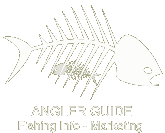 |  |
|
Navigation - Business - Great Lakes - Great Plains - Northeast - Northwest - Rocky Mountains - Southeast - Southwest - Technology - Trophy Catches
|
In recent years, fishing at Hosmer Lake has focused on the naturally reproducing brook trout and Atlantic salmon, which are stocked annually, said ODFW fish biologist Brett Hodgson. ODFW diversified the fishery this year with the addition of rainbow and cutthroat trout. Should one or both of these species survive and grow enough to offer a quality fishery, they could replace Atlantic salmon on the stocking schedule, Hodgson said. “Our management objective for Hosmer Lake is not changing,” he said. “We will continue to manage Hosmer Lake to provide a unique, quality fish experience for a feature species” “We are simply evaluating some different alternatives for what that featured species will be,” he added. Hodgson also said ODFW has not proposed any fishing regulations changes for the lake – there are no plans to change its fly-fishing-only status, or allow for the harvest of Atlantic salmon. Current regulations allow anglers to keep five trout per day and will continue. The proposed changes to the hatchery stocking practices at Hosmer Lake come for two reasons. Hodgson believes the cutthroat and Cranebow (hatchery rainbow trout produced from wild Crane Prairie redband trout) trout stocked this spring might provide a better fishing opportunity for many anglers. These fish have the potential to reach 20 or more inches long in Hosmer’s rich, productive waters, eclipsing the average Atlantic salmon’s 16-inch length. The efficient use of hatchery resources is also being considered. In years, the 3,000 Atlantic salmon being stocked into Hosmer have been raised at the nearby Wizard Falls Hatchery. Hosmer is the only lake in Oregon that is stocked with Atlantic salmon and ODFW managers question whether producing a small number of fish for a niche fishery is a good use of resources. Hodgson stated ODFW will monitor the quality of the Hosmer fishery and the effectiveness of the new stocking program during the summer of 2014. Results will influence ODFW’s proposal for future management. Anglers will have an opportunity to weigh in on the possible changes to stocking practices and regulations at Hosmer during a series of public meetings to be held fall 2014. In the meantime, anglers can send their comment to Brett Hodgson at brett.l.hodgson@state.or.us or 541-388-6009. “We welcome public input on any future regulation changes for Hosmer Lake,” Hodgson said. Any regulation changes proposed by the public would be considered during the 2016public process for the 2017 sport fishing regulations. Historically, Hosmer Lake did not have a native fish population, but did boast a scenic mountain setting and crystal clear water. In 1929 ODFW began stocking the lake to provide additional recreational fishing opportunity in Central Oregon. Over the years, Hosmer has been stocked with rainbow trout, Atlantic salmon and brook trout. New population of non-native trout could slow recovery of native cutthroat in McDermitt Creek HINES, Ore. – Efforts to restore a population of native Lahontan cutthroat trout in McDermitt Creek in southeast Oregon suffered a setback earlier this month when biologists discovered a reproducing population of non-native brook and rainbow trout in the river. According to Shannon Hurn, ODFW fish biologists in Hines, biologists were aware that some non-native trout had been illegally re-introduced into the creek but didn’t realize the extent of the of the population until they tried to remove it. “We had hoped to be able to remove most of the non-native trout in order to set the stage for continued reintroduction of native Lahontan cutthroat trout,” Hurn said. “However, we were surprised by the number and size of the brook and rainbow trout that we found.” Even more concerning, Hurn added, was the presence of at least two age classes of non-native trout, indicating the fish had been in the river long enough to have reproduced.
The discovery casts some doubt on the agency’s eight-year effort to restore native Lahontan cutthroat trout to this remote watershed in southeast Oregon, where native fish have been pushed out by brown and brook trout or genetically comprised by hybridizing with rainbow trout. Hurn said she suspects the non-native fish may have been illegally introduced by anglers frustrated with the slow pace of reintroduction efforts. Between 2006 and 2009 biologists methodically treated the creek with rotenone, a plant-based fish toxicant, in order to remove non-native trout, and in 2012 the watershed was closed to all fishing after the Holloway fire in order to protect any remaining Lahontans. “Obviously we need to do a better job of communicating with the angling community,” Hurn said. “If we can successfully re-establish a Lahontan trout fishery if could mean huge 20-inch Lahontan trout instead of 10 to 12-inch brooks and rainbows.” Biologists will conduct blood, genetic and scale tests on the rainbow and brook trout they removed from the creek to try to find out how old the fish are and whether they are from a hatchery stock. It is a felony in Oregon to transport and release live fish without a permit.
In the meantime, biologists will take some time to re-evaluate their fish restoration plan for McDermitt Creek. “In the short-term, we’re going to focus on the Lahontan cutthroat trout populations in the upper tributaries,” Hurn said. “They’re our strongholds and we want to make sure they stay strong.”
Comments
«Back | News Home
| |||||||||||||||||||||||||||||||||||